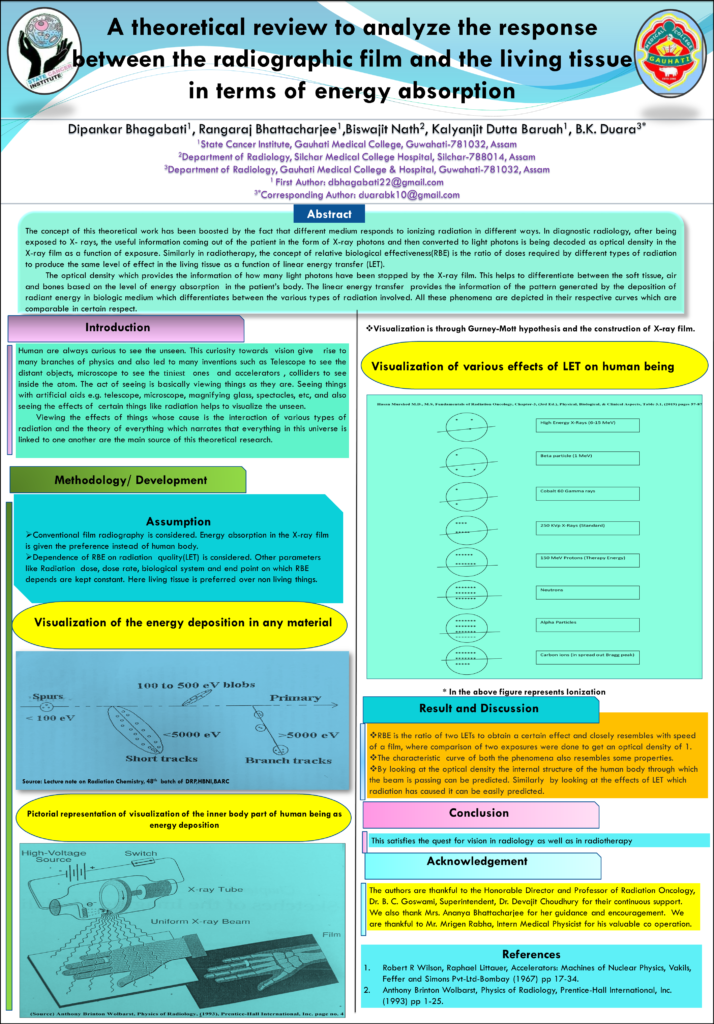
A Theoretical review to analyze the response between the radiographic film and the living tissue in terms of energy absorption
The concept of this theoretical work has been boosted by the fact that different medium responds to ionizing radiation in different ways. In diagnostic radiology, after being exposed to X-rays, the useful information coming out of the patient in the form of X-ray photons and then converted to light photons is being decoded as Optical density in the X-ray film as a function of exposure. Similarly in radiotherapy, the concept of relative biological effectiveness (RBE) is the ratio of doses
required by different types of radiation to produce the same level of effect in the living tissue as a function of linear energy transfer (LET).
The optical density which provides the information of how much light photon has been stopped by the X-ray film. This helps to differentiate between the soft tissue, air and bones based on the level of energy absorption in the patient’s body. The linear energy transfer provides the information of the pattern generated by the deposition of radiant energy in biologic medium which differentiates between the various types of radiation involved. All these phenomenons are depicted in their respective curves which are comparable in certain respect.
